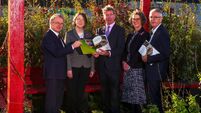Mart trading on the increase
While the overall average increase is modest, the upward trend is welcomed by the mart operators, who have been through one of the toughest periods in their history following the ban on sales under the FMD restrictions imposed in 2001.
Mart sales were up by 5% overall for the first quarter of the year. With the trend being maintained to date in the second quarter, there is now an expectation that the marts will show a 10% increase for the year, when the pattern is extended through the larger autumn sales period.










